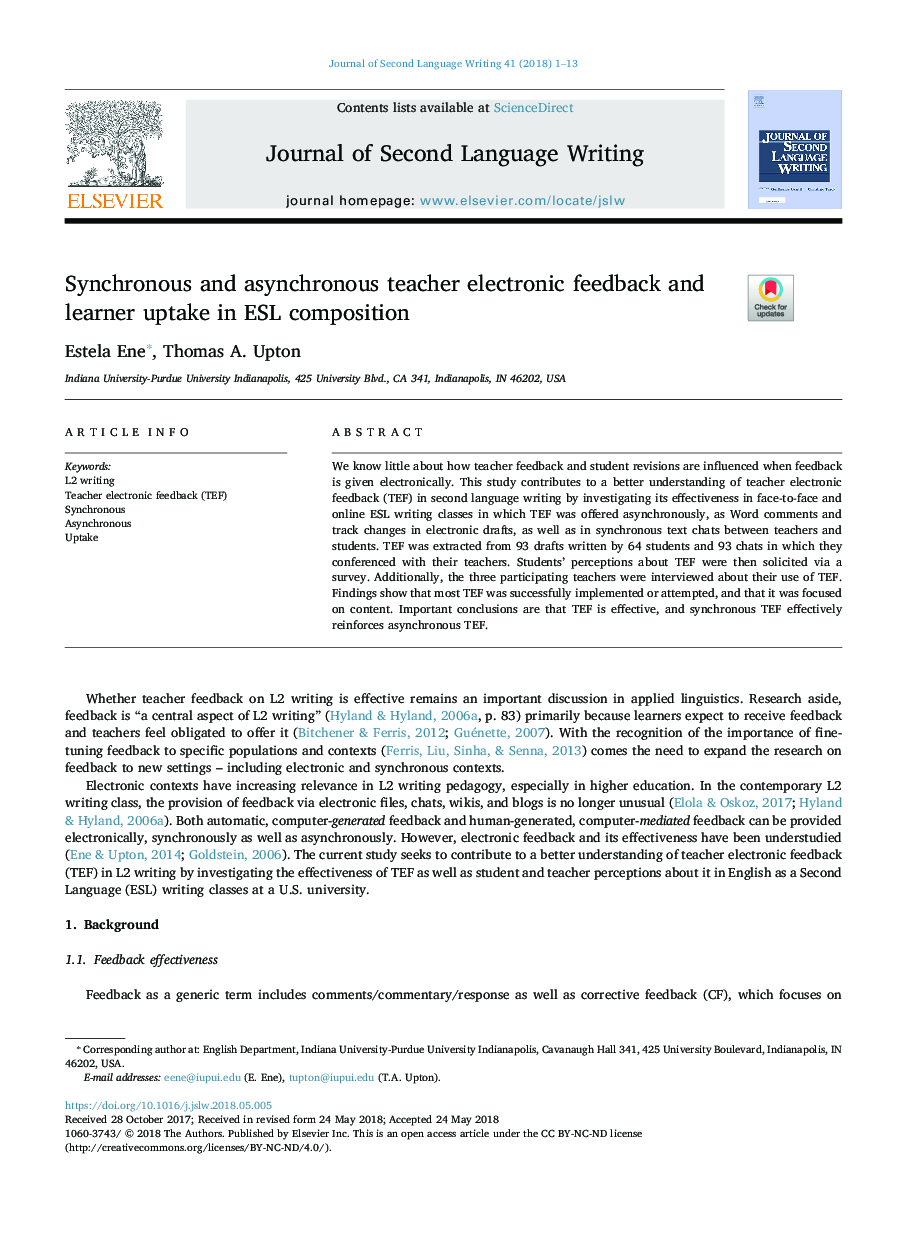| Article ID | Journal | Published Year | Pages | File Type |
|---|---|---|---|---|
| 6843806 | Journal of Second Language Writing | 2018 | 13 Pages |
Abstract
We know little about how teacher feedback and student revisions are influenced when feedback is given electronically. This study contributes to a better understanding of teacher electronic feedback (TEF) in second language writing by investigating its effectiveness in face-to-face and online ESL writing classes in which TEF was offered asynchronously, as Word comments and track changes in electronic drafts, as well as in synchronous text chats between teachers and students. TEF was extracted from 93 drafts written by 64 students and 93 chats in which they conferenced with their teachers. Students' perceptions about TEF were then solicited via a survey. Additionally, the three participating teachers were interviewed about their use of TEF. Findings show that most TEF was successfully implemented or attempted, and that it was focused on content. Important conclusions are that TEF is effective, and synchronous TEF effectively reinforces asynchronous TEF.
Related Topics
Social Sciences and Humanities
Arts and Humanities
Language and Linguistics
Authors
Estela Ene, Thomas A. Upton,
